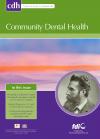Community Dental Health

- Cover Date:
- September 2008
- Print ISSN:
- 0265 539X
- Vol:
- 25
- Issue:
- 3
Restorative treatment threshold reported by Iranian dentists
Objective: To study Iranian dentists’ conceptions of the earliest stage to place a restoration on proximal caries lesions. Basic research design: A questionnaire survey was carried out among the participants of two annual dental meetings in Tehran, Iran, in December 2004 and July 2005. The questionnaire was filled in anonymously and returned during the meeting days. The questions covered two patient paper cases with schematic drawings of the radiolucency of proximal caries lesions according to bitewing radiographs from 20-year-old patients: one high-caries case and one low-caries case. Dentists’ gender, age, working experience and place, and participation in continuing education served as background data. In total, 1,033 dentists completed the questionnaire, 63% were men. Statistical evaluation was by the Chi square test and logistic regression. Main outcome measures: Respondents were to select from four alternatives the earliest stage in the progression of a lesion at which they would intervene by restorative treatment. Results: For the high-caries case, 77% of the respondents chose to restore a caries lesion confined to enamel; activity in continuing education was the strongest factor (OR=1.4) to explain dentists’ restoring a lesion no earlier than in dentine. For the low-caries case, 32% chose to restore a lesion in enamel. Restoring a lesion no earlier than in dentine was more likely (OR=1.5) among female dentists. Conclusion: Iranian dentists seem to prefer early restorative intervention, which indicates a need to focus on the preventive aspects of caries treatment both in dental curricula and in continuing education.
Key words: Dentists’ characteristics, patient paper case, proximal caries, restorative treatment decisions.
- Article Price
- £15.00
- Institution Article Price
- £
- Page Start
- 185
- Page End
- 190
- Authors
- H. Ghasemi, H. Murtomaa, H. Torabzadeh, M.M. Vehkalahti
Articles from this issue
- Title
- Pg. Start
- Pg. End
- Comparison of two methods in deriving a short version of oral health-related quality of life measure.
- 132
- 136
- The presenting complaints of low income adults for emergency dental care: An analysis of 35,000 episodes in Victoria, Australia.
- 143
- 147
- Cariogenic and erosive potential of the medication used by HIV-infected children: pH and sugar concentration
- 170
- 172
- Enamel fluorosis in 12- and 15-year-old school children in Costa Rica. Results of a National Survey, 1999
- 178
- 184
- Short Communication - Fissure sealants on permanent first molars – consequences of a one-year delay
- 191
- 192
